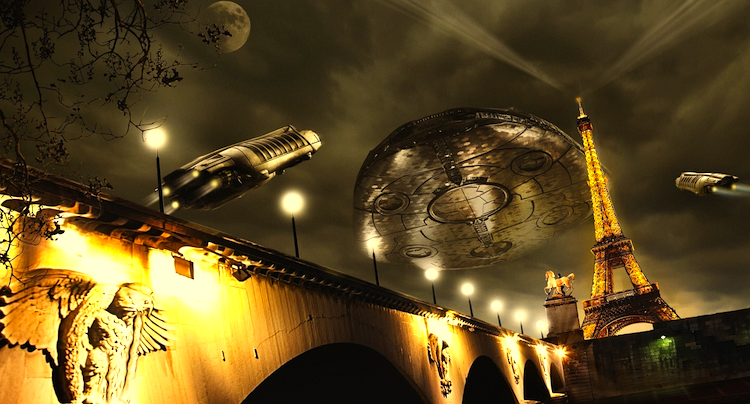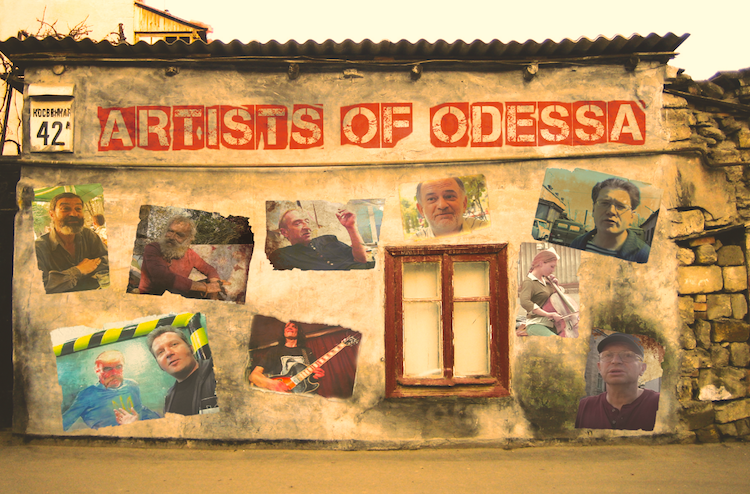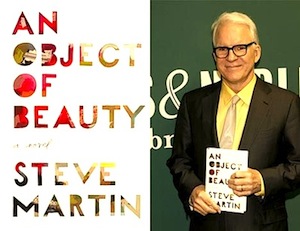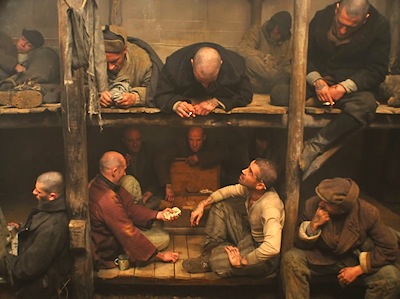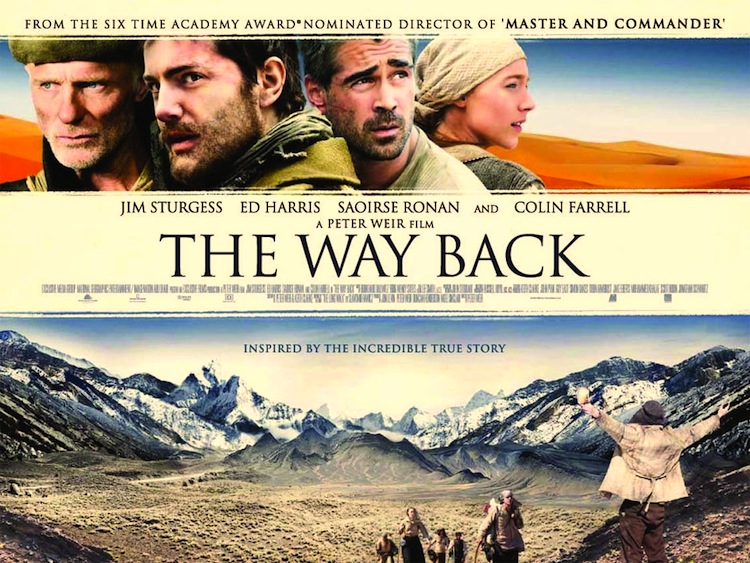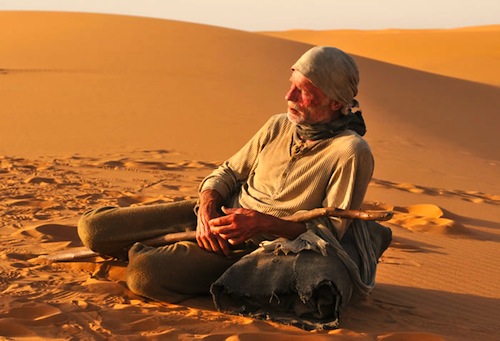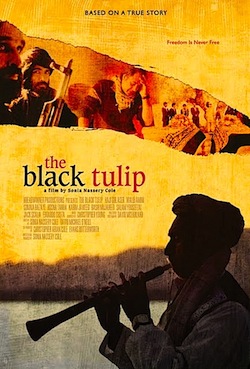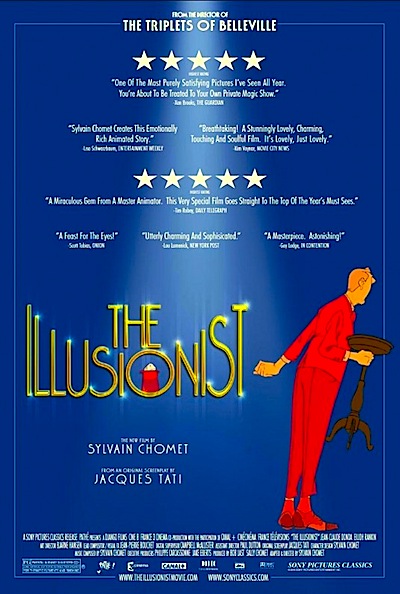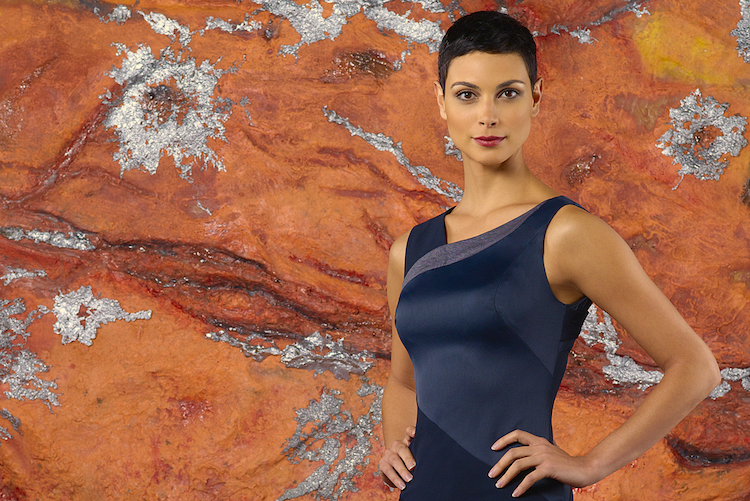
By Jason Apuzzo. Have you ever had the feeling – recently – that you were watching a classic?
I unexpectedly had that feeling Tuesday night watching ABC’s Season 2 premiere of V, even if – skeptic that I am – I’m not completely trusting that feeling just yet. I simply can’t believe this series could be as good as it currently appears to be. It must be a mirage, a hallucination – correct?
Over the holiday vacation, I’d actually taken the time to finish the entire Season 1 of V on DVD, and was pleasantly surprised – no, overjoyed – that the series had taken the striking thematic turns it had. Of course, years of being saturated with Hollywood entertainment has taught me to be skeptical, and to resist giving myself over to politically-oriented network programming (which V most certainly is) unless I happen to know some of the people involved – ABC’s Path to 9/11 being an example – or otherwise have some grasp of the professional agendas in play.
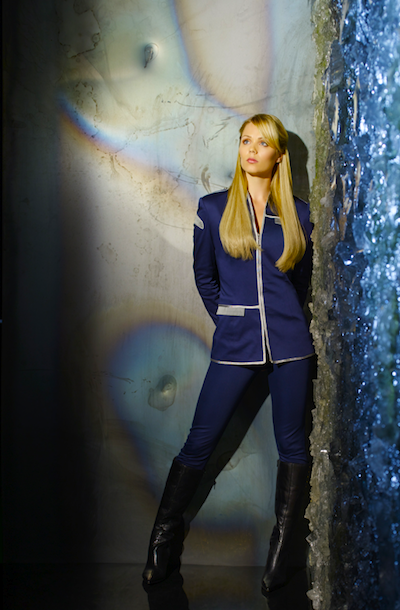
But I’m reaching the breaking point with this new incarnation of the V series: I am, quite simply, loving it – and am in a state of ongoing shock as to what I’m seeing depicted on a show-by-show basis. Because what I’m seeing, in essence, is this:
• A show that dismantles the liberal-progressive/green-environmental vision of the world more thoroughly, and with greater wit and psychological insight, than any 3 prime-time shows on Fox News put together.
• A show that has somehow managed to anticipate (rather than merely follow) the anti-Obama, anti-big government, Tea Party vibe of our times – without losing its sense of timelessness, or the universality of its themes.
• A show that features among its primary heroes a Catholic priest/Iraq War Army chaplain-vet (how many times have you seen that on network TV?), paired with an FBI counter-terrorism agent. Ahem. The priest’s mission, incidentally, is to direct his parishioners’ faith toward God and transcendent values – rather than toward immanent political power, or toward wondrous lifestyle-technologies. What a message for our times!
• A show in which the menacing invader-aliens use the promise of universal health care and advanced green … excuse me, ‘blue’ technology to cultivate public addiction to their rule. Ahem, and double ahem.
• A show that portrays the news media as willing dupes of hostile invaders here to do us harm. (I can’t imagine where anybody got that idea, by the way.)
• A show depicting young, dumb teenage guys as being … young, dumb teenage guys – rather than as pseudo-divine Chosen Ones with ‘special powers’ here to save us all.
• A show featuring strong, intelligent, professional women as the lead characters – women deftly balancing their families and careers (after all, even an alien queen has to control her daughter!) – women who never lose either their femininity or their competitive edge.
• A show featuring Laura Vandervoort as an alien princess with a plunging neckline.
OK, perhaps the last point isn’t quite so critical here for our purposes, but you get the idea – there’s a lot to like about V.

For those of you who aren’t otherwise familiar with the show, ABC’s V is a remake/reboot of NBC’s original V series from 1983, a series created by Kenneth Johnson – a TV legend responsible for shows like The Six Million Dollar Man and The Hulk. It’s not clear to me how much (if at all) Kenneth Johnson is involved in this new series, but having seen the original series – and having read both of Johnson’s superb V novels (including the most recent, from 2008) – I think that ABC’s current re-visioning of V is actually even better than the 1983 original from NBC. It’s storyline is richer, more sophisticated – and also frothier and more entertaining.
V in any of its various TV or novel incarnations is essentially a retelling of the familiar alien-invader stories that were so popular in 1950s sci-fi cinema; one thinks here of films like Invasion of the Body Snatchers (1956), Invaders From Mars (1953), The Thing (1951), The Day the Earth Stood Still (1951) or Earth vs. The Flying Saucers (1956). Or, for that matter, one thinks of more recent fare like Independence Day (1996) or the Alien and Predator series; and, when all is said and done, I expect that the V franchise is at some point going to take its place in pop culture alongside those other revered alien invasion films once this new series (and Kenneth Johnson’s hoped-for movie adaptation) has played itself out.
In V, gigantic alien saucers arrive over 29 major cities throughout the world carrying beings (‘Visitors’) who appear to look like us – and who claim to come in peace. The aliens profess to desire only a small, unspecified token of Earth’s resources, in exchange for which they offer to share their own technological and medical advancements.
Of course, we learn in short order that these alien visitors are not here in peace, at all, and that underneath their synthetically grown human skin they actually resemble reptiles – scaly, carnivorous reptiles with sharp tails. (If you’ve read Arthur C. Clarke’s Childhood’s End, this all may sound familiar.)
That’s the basic V setup. The remainder of the series – whether on the TV shows or in the novels – consists of the aliens’ complicated efforts to curry the social and political favor of their human hosts, to propagandize and control the human population in order to achieve an ultimate end. What that end is, exactly, is something I won’t reveal here in case you don’t already know – although, in fairness, the aliens’ mission appears to be somewhat different in the new series than in the original.
What’s interesting here, however, is that in their human skin – and while living among human beings on Earth – the aliens themselves begin to change. They begin to take on empathetic human emotions – i.e., they begin to go soft – and some even ‘fraternize’ with the enemy. (One thinks here of 1958’s I Married a Monster From Outer Space, a great little thriller from director Gene Fowler that riffs of 1949’s similarly fun I Married a Communist.) And so, in both the old series and the new one, aliens impregnate Earth women and hybrid children are born – complicating matters even further. Among other complications, these new ‘mixed marriages’ and children create a tension on time, as the alien leadership must rush to achieve their goal before their own kind begin to get too chummy with their Earth subjects …

Both the new and old series are great fun, and both series cleverly comment on the ways in which totalitarian-style governments – particularly those of the fascist and communist variety – win the hearts and minds of their populations through the now-familiar totalitarian bouillabaisse of trickery, false promises, bribery, surveillance, secret police and aggressive control of the media.
Kim Jong-il, are you watching?
What has been especially uncomfortable for many people, however, is how close the current V series seems to be to depicting/satirizing the current Obama Administration, and in satirizing ‘progressive’ rule in general. In case you missed the first episode of Season 2 this week, for example, the aliens promised to reverse global warming as another p.r. gesture in their ongoing seduction of Earth’s population. Doesn’t that sound familiar? I can’t think of a Democratic politician in the past ten years who hasn’t campaigned on that exact platform: Elect me and the tides will recede. I’ve spent most of my life living near the ocean in a state run by Democrats, and the tides somehow remain the same.
V wouldn’t be nearly so effective, however – it would merely be a kind of talk radio screed – if it weren’t so entertaining.
Now starting its second season, the show is starting to develop that iconic quality that great TV shows develop once they hit their full stride – and I think Brazilian-born actress Morena Baccarin as the wicked alien queen Anna is probably most responsible for that. She’s great fun to watch – and her behavior grows increasingly perverse and diabolical as the series goes on. She makes Hillary Clinton seem like Doris Day, and she might be the best alien queen since Laurie Mitchell in 1958’s Queen of Outer Space – although Jane Badler from the original V series is apparently coming back as Anna’s mother, so she’ll also be around to contend with, as well. (The rest of the cast is superb, as well – in particular Joel Gretsch as the priest and Scott Wolf as the slimy news anchor.)

A word on great female roles: V is full of them, and kudos to the show’s producers for putting strong, compelling female characters at the center of the V storyline – and particularly that of the FBI agent, played by Lost’s Elizabeth Mitchell. It’s all quite refreshing and humanistic, during what appears to be a misogynistic period for Hollywood.
And, more than that, I think the show’s fluidity with both male and female characters is an indication of V‘s special genius, because the show’s creators – starting with its original creator, Kenneth Johnson – have always understood (unlike so many of today’s current, ever-expanding crop of youngish sci-fi filmmakers) that alien invasion stories aren’t really about aliens. These are stories about the darker aspects of the human personality, and the way in which – through our actions – all of us have the potential to ‘dehumanize’ ourselves. Alien invasion stories such as V‘s are always ultimately about human beings, male and female, and our potential for good or evil.
And so, appropriately enough, V proceeds most of the time as a huge, extended family drama – in which everyone is gradually getting entangled in everyone else’s family, for better and for worse.
My sense is that this series is headed in a direction that will involve the Visitors and Earth’s human beings having to eventually find some way to live together, to co-habitate and compromise. Why? Because this, too, is the way of things – the way of history, the inevitable by-product of a mingling of peoples. And, interestingly, some of the political sting of the series may wear off as that process proceeds.
I’m reminded of a book I picked up, recently – Bernal Díaz’s The Conquest of New Spain, a first-person account of the conquest of Mexico and Montezuma by the Spaniards under Hernán Cortés, written in the late 16th century by a veteran of Cortes’ campaign. I was thinking as I thumbed through the book of how many descendants of the Spanish conquistadors and of their Aztec foes have probably intermarried by now, settled down, and raised children. This is the way of the world, after all.
So bravo to ABC for putting together such a timely, juicy and sophisticated series. Of course, they could just as easily blow it next week – I notice with some trepidation, for example, that there seems to be a ‘suicide bomber’ subplot in the next show – but for now I will bask in the warm glow of a great series, with a full season ahead.
After all, I never expected to enjoy this series as much as I already have.
Posted on January 6th, 2011 at 1:05m.
